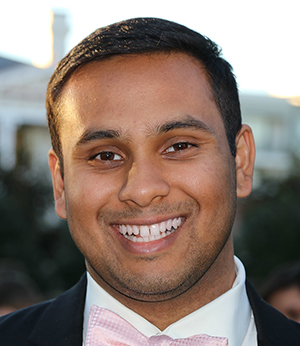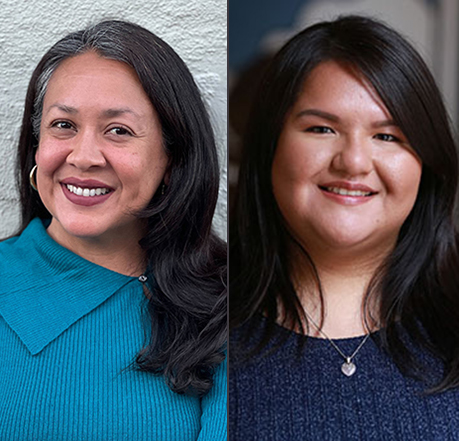Staff and Trustee Conversation on Conscious Whiteness & Racial Equity with The CARESTAR Foundation
an Interview by Caitlin Brune, Northern California Grantmakers with Tanir Ami, CEO and Michael Heil, Board Chair, The CARESTAR Foundation
I connected with Tanir Ami, CEO of the CARESTAR Foundation, and Michael Heil, Board Chair, during the final week of NCG’s learning series Unconscious Whiteness for Board Members & Trustees, where a cohort of 15 white-identifying board members and trustees came together to learn. We discussed their motivation for participating, the challenges and opportunities CARESTAR has encountered in attempting to center racial equity, and what’s next in manifesting their commitment. The conversation has been edited for brevity.
Describe a few early moves to center racial equity within the CARESTAR Foundation.
Michael: About two years ago, Tanir invited our board to think about race and its impact on emergency and trauma services. Until then, to be honest, I had not really thought about it. Since that time, I have had a new curiosity to learn about how race and ethnicity impacts emergency services and health outcomes.
At the same time, Tanir invited the board to reflect on the composition of our board and to notice that, at that time all of us were White, advantaged in our society. I couldn’t help but wonder what implications this lack of cultural diversity and life experience was having on how we do our jobs as board members and whether we could truly understand the experiences of all Californians using emergency services. We committed to both enlarge and diversify our board. We have now recruited six new members and have a plurality of members with diverse racial and ethnic backgrounds. This has already led to new and, sometimes difficult conversations.
As you’ve proceeded, what obstacles have you encountered – personally? Organizationally?
Tanir: From early on, I’ve frequently felt discomfort. 2020 was not an easy year on many levels. In addition to all of the ramifications of the pandemic personally and professionally, difficult conversations happened around race and equity in board meetings and in one-on-ones offline. Watching and sitting with people as they are uncomfortable is difficult in itself. As a woman and as “the boss,” I have an internal narrative that it’s my responsibility to fix it, solve it, make it better, alleviate tension.
Frequently, I need to navigate the tension and not fix the discomfort, but hold an authentic, transparent process. It’s very hard to be in the mess of a hot conversation. I feel sweaty, shaky, nervous, second guess myself. And I have gotten increasingly comfortable with discomfort. I wish that everyone could have a shared understanding of discomfort – no need to fix it, make it go away, bypass it.
Michael: At this point in my career, I have seniority in my field, which means I’m often called an “expert,” called to offer ‘expert’ testimony and so forth. This bleeds back into one’s consciousness. Recently, Tanir sent me the demographic profile of paramedics, which revealed how the profession is horribly skewed to White men. I had a very uncomfortable moment because I didn’t know this, despite all my “expertise”!
When we, as a board, were talking about what lens would influence our grantmaking and operations, race was on the table. I was, at the time, arguing for the social determinants of health – the constellation of income level, where one lives, gender, and other factors that influence health outcomes. I felt this internal refusal to just center race that ended up being uncomfortable; I got good, strong pushback. Maybe one of the reasons I was fighting it was unconscious whiteness. Personally and professionally, it’s uncomfortable for there to be so much that is true that I also am not aware of.
What’s been satisfying? What breakthroughs have you experienced?
Tanir: Personally, it’s been satisfying to follow through on my desire to truly center racial equity in our organization. I now know I won’t get fired [laughter] and it feels like we have really good momentum as a group; that there’s a shared sense of curiosity and willingness.
Michael: Sometimes, I feel like I got on a bucking bronco, especially through this refinement of our mission, vision, and values. But I am putting faith in the collaborative and open process and haven’t gotten thrown off yet. I do worry about what we will actually do differently, though, in how we select the initiatives we will undertake.
What’s next?
Tanir: We are JUST figuring out what centering race equity means as it moves through our organization – internally, in all our operations, and our grantmaking. We have “good bones in place”: a more representative and culturally diverse board, a mission and vision that clarifies our commitment, and a strategic plan that provides a framework. Still, I am wading through uncertainty about what this will demand of the foundation in terms of grantmaking. I would say that we’ve moved through the “Awake” phase and are swimming around in the “Woke” and “Work” area of effort, to use Equity in the Center’s metaphor. The Work phase looks like living, breathing racial justice through all aspects (org culture, vendors, investments) and external work (grantmaking).
What key insights would you offer other CEOs and board members committed to advancing racial equity and racial justice?
- Begin with the board
- Build tolerance of discomfort
- Bring curiosity, humility, openness, and commitment (to stay the course)
- Start from a place of not-knowing
- Listen, to each other around the board table, your grantees, and trusted leaders of color







